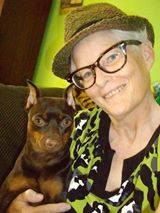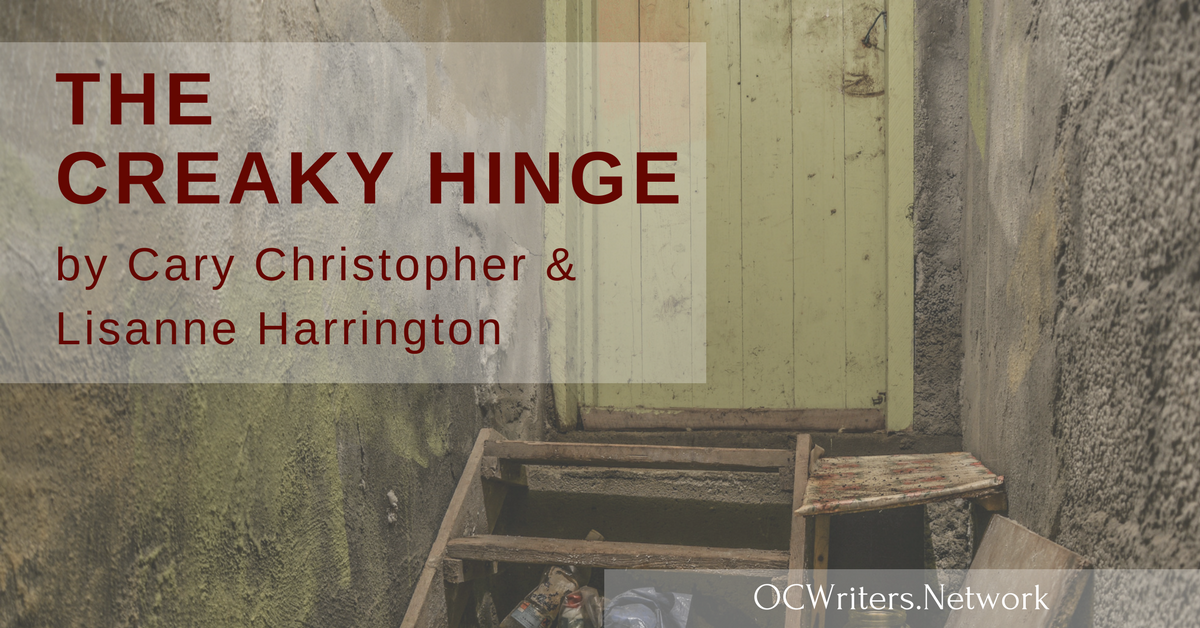by Cary Christopher and Lisanne Harrington
Growth. Like the Boogeyman, it’s all around us. Our gardens are filled with growing flowers and, if we have a brown thumb like Lisanne, weeds. Saplings grow into shade trees. The moon grows from a new moon to full. Our children seem to shoot up practically overnight, going from teeny little helpless lumps to actual people with their own thoughts and ideas.
Identifying It
But how do we recognize it in our writing? And particularly, in our monsters and other paranormal beings?
Lisanne recently cleaned out the files in her laptop and happened across one of her first short stories. Upon reading it, she groaned. It was easy to see what a newbie she was. It was reflected in the quality of her writing. Here are a few lines from the original story:
The happiest day of my life was the day I married my childhood sweetheart. Carrie and I met in the fourth grade. I think I knew even then that I was going to marry her someday.
Not bad, but not great. Lisanne knew that now, years later, she could do better:
The happiest day of my life was the day I married my childhood sweetheart. Carrie and I met in the fourth grade. She came up to me on the playground the very first day, a tom boy vision in a blue baseball cap with her thick auburn pony tail sticking out the hole in the back and a smattering of freckles across her nose and cheeks. A bright yellow softball in one hand and a bat in the other, she challenged me on the spot to a hitting duel.
“Hey, new kid,” she said. “Can you hit?” I was mesmerized by the way she tossed the ball shoulder high and caught it at her waist, never once having to look at what she was doing.
“Um, yeah, sort of,” I stammered. We headed off to the baseball field where she beat me hands down, not only hitting more balls than I did, but a lot further, too.
I think I knew even then that I was going to marry her someday.
By fleshing out the story (showing growth in her writing) and throwing in a cute little anecdote, it is far more engaging, don’t you think?
Grow Up, You Monster You!
But what about monsters? How do we show growth in them?
Good question.
Hopefully, we can answer it… ☺
If you look at Mary Shelley’s Frankenstein, the creature is at first a murderous beast out to kill anyone who gets in the way of his revenge on his creator, Victor Frankenstein. He does commit murder, and we think he is just a horrible monster. But then, at the end, Victor dies, and the monster is grief-stricken. Lonely, suffering and remorseful, Frankenstein’s monster wanders off to die alone.
Growth, right?
First we hate the horrible monster, then we feel pity for him. He has grown from mindless fury to a creature with a soul.
The trick to showing growth in a monster (or any character) is about adding depth. If you’re writing horror or fantasy, chances are that your monster started out as a caricature. Almost all of them do. The vast majority of monsters in books and film started off in myths and legends. Let’s face it, there’s very little depth in a story that’s been told around a campfire for centuries.
As authors (instead of vagabond campfire storytellers) we have a unique opportunity. We can take those monsters and inflate them into three dimensional beings. In the example given above, the monster shows a human side that causes the reader to care. You don’t have to get touchy-feely with it though.
For instance, in Stephen King’s book, Salem’s Lot, the monster du jour is a vampire named Barlow. I think we can all agree that vampires have been written about almost to the point of oversaturation. King’s approach is actually pretty straightforward. Instead of adding feeling to the creature like Anne Rice would, he plays the character as you would expect to see it in a Universal Studios film. The depth comes from how vile and vicious Barlow is. While he doesn’t have a character arc that allows him to become something new, he does grow beyond the two dimensional gothic blood sucker we’ve come to expect. King strips him of all the romance and then embellishes the character by having him break taboos like preying on children and toying with priests. Ultimately, he goes from being the “cut-out” version of a vampire to becoming an unpredictably evil character whom the reader can’t help but hate.
Sparkly vampires aside, you expect to dislike a monster like Barlow. The growth is in the depth of loathing King makes his Constant Reader feel towards Barlow, when all we expected was to simply hate him.
Spend Time With Your Victims
Back to growing as an author, one trap you want to steer clear of is paying too much attention to your monster and forgetting the rest of your cast. Remember, you’re a writer. You paint pictures with words. Make sure that your other characters are fully developed as well. Whether they live until the end or die in the first twenty pages, your characters need to feel real. With that in mind, take the time to figure them out before you go feeding them to your creature of choice.
Remember that iconic scene in Stephen King’s IT, when young Georgie goes to play in the rain and runs into Pennywise? Did you need to know all that much about Georgie? Maybe not, but it sure did make the horror of his situation hit home once you found out how close he was to his brother and how desperately he wanted to play in the rain.
In Cary’s book The Wash, poor little Katie Anderson encounters the supernatural in the first ten pages. Instead of being a throwaway character, those pages let you get to know her family life, her desires, and why she’s trying to run away in the first place. The goal is to make the reader cringe even more when the danger approaches, so spend some time with your victims to make the good stuff really hit home.
Watering Your Mental Garden
Now you’re probably asking yourself why we’re pointing you to Stephen King so much in this article. The answer is simple. If you want to learn how to grow your characters (and monsters), the best thing you can do is read other authors who do it well. It’s called research and it’s vitally important that you expose yourself to how other authors practice their craft. King is an excellent choice when it comes to character development. Take the time to read beyond the story itself. Watch how your favorite authors develop their characters. Note how their language flows and how dialogue changes. Learn how they take a situation and escalate the tension, or subtly lay a clue in the middle of a chapter that seems to be about nothing in particular but turns out to be critical later on.
Once you begin to write your story, take those lessons and put them into practice. Be careful not to adopt their voice, but learn from their examples and let your own voice shine through. If you want to grow as a writer, then you have to tend your mental garden and there’s no better way to do that, than to read!
As King says, if you don’t have time to read, you don’t have the time or the tools to write.
***
Cary Christopher was born and raised in Florida and Georgia but has called Southern California home now for almost 20 years. He’s written extensively about music, movies and pop culture online and for various publications around SoCal. Now he primarily writes for his blog (www.carychristopher.com). His new novel The Wash is available on Amazon.
Link to my Amazon Authors Page: https://www.amazon.com/Cary-Christopher/e/B076FD8MJ3
 After sixteen years as a paralegal, I staged a coup and left the straight-laced corporate world behind forever. I now pander to my muse, a sarcastic little so-and-so who delights in getting the voices in my head to either all speak at once in a cacophony of noise or to remain completely silent. Only copious amounts of Diet Cherry Dr. Peppers and hamburgers will ensure their complicity in filling my head with stories of serial killers, werewolves, and the things that live under your bed.
After sixteen years as a paralegal, I staged a coup and left the straight-laced corporate world behind forever. I now pander to my muse, a sarcastic little so-and-so who delights in getting the voices in my head to either all speak at once in a cacophony of noise or to remain completely silent. Only copious amounts of Diet Cherry Dr. Peppers and hamburgers will ensure their complicity in filling my head with stories of serial killers, werewolves, and the things that live under your bed.
I live in SoCal, in the small town I fashioned Moonspell’s Wolf Creek after, with my beloved husband and persistently rowdy, always-has-to-have-the-last-word Miniature Pinscher, Fiona.
*O.C. Writers is a participant in the Amazon Services LLC Associates Program, an affiliate advertising program designed to provide a means for us to earn fees by linking to Amazon.com and affiliated sites. By clicking on the book links anywhere on this site, we earn a small commission from your purchase.






One Reply to “Monstrous Writing Growth”